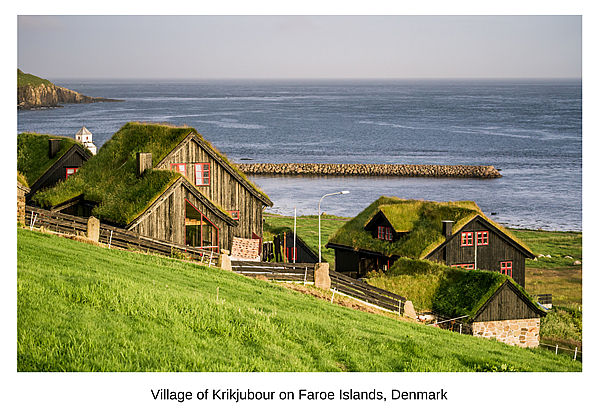 Faroe Islands: The Emerald Isles of the North Atlantic
Faroe Islands: The Emerald Isles of the North Atlantic
Jutting out from the tempestuous waters of
the South Atlantic, the Falkland Islands are a haven for wildlife and a destination that invites you to delve into a world far removed from the one you know.
An archipelago of over 700 islands, the Falklands weave a fascinating story of human resilience, historic conflicts, and a rich tapestry of biodiversity.
Tucked between the chilly waves of the North Atlantic Ocean and the Norwegian Sea, the Faroe Islands are a cluster of 18 volcanic islands, characterized by steep cliffs, cascading waterfalls, and expansive green landscapes. These islands, with their grass-roofed houses, countless sheep, and an abundance of birdlife, promise an intriguing fusion of Nordic charm and rugged beauty.
The islands encapsulate an otherworldly allure. Their majestic mountains adorned with a palette of green shades under the shifting northern skies paint a picture of serenity that feels almost ethereal. From the puffins of Mykines to the imposing sea cliffs of Vágar, the Faroes are a playground for wildlife and nature enthusiasts. Hiking across its verdant terrains opens up breathtaking views of the ocean, making the effort a truly rewarding experience.
Each island showcases its distinct personality. Streymoy, the largest island, houses the charming capital city, Tórshavn, with its old town, Tinganes, offering a delightful blend of historic architecture and modern lifestyle. Meanwhile, the tiny, unspoiled island of Kalsoy is synonymous with the iconic Kallur Lighthouse that stands on a green cliff, overlooking the churning sea.
The Faroe Islands also fascinate visitors with their deep-seated traditions. The music and dance forms, unique to the archipelago, are still very much alive and celebrated, especially during the summer festivals. Faroese gastronomy, with its emphasis on local produce and seafood, is another avenue that introduces travelers to the culture of these islands.
For a short video introduction of Faroe Island, click below
Visa Requirements
The Faroe Islands are not part of the Schengen area, even though Denmark is. Therefore, a Schengen visa will not suffice; a separate visa is required unless you come from a country with a visa exemption agreement with the Faroes.
Currency
The Faroese Króna (DKK) is the official currency. Credit cards are widely accepted, but having some cash on hand for small purchases is recommended.
Language
The official language is Faroese, a North Germanic language closely related to Icelandic. However, English and Danish are also widely spoken.
WiFi and SIM Cards
Internet and mobile connectivity are good in towns and some rural areas. SIM cards can be purchased from local providers, and many hotels, restaurants, and public spaces offer free WiFi.
Health and Safety
The Faroe Islands are very safe, with almost negligible crime. Standard healthcare facilities are available, but complex cases may require medical evacuation. The terrain can be challenging, so appropriate hiking gear and preparation are necessary.
Last but not least
Here's a trick: embrace the unpredictable weather of the Faroe Islands. Carry waterproof gear, and don't let a sudden drizzle dampen your exploration spirit. Sometimes, the most dramatic and beautiful moments are unveiled beneath the moody Faroese skies.
